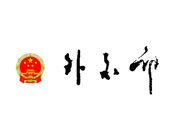


African Members of FOCAC
- Algeria
- Angola
- Benin
- Botswana
- Burkina Faso
- Burundi
- Cabo Verde
- Cameroon
- Central Africa
- Chad
- Comoros
- Congo
- Cote d'Ivoire
- Congo(Kinshasa)
- Djibouti
- Egypt
- Equatorial Guinea
- Eritrea
- Ethiopia
- Gabon
- Gambia
- Ghana
- Guinea
- Guinea-Bissau
- Kenya
- Lesotho
- Liberia
- Libya
- Madagascar
- Malawi
- Mali
- Mauritania
- Mauritius
- Morocco
- Mozambique
- Namibia
- Niger
- Nigeria
- Rwanda
- Sao Tome and Principe
- Senegal
- Seychelles
- Sierra Leone
- Somalia
- South Africa
- South Sudan
- Sudan
- Tanzania
- Togo
- Tunisia
- Uganda
- Zambia
- Zimbabwe
- The Commission of the African Union
Eritrea
(Updated February 2018)
【Official Name】State of Eritrea
【Area】124,000 k㎡, including the Dahlak Archipelago (nearly 1,000 k㎡).
【Population】6.7 million. There are nine ethnic groups: Tigrinya (around 50% of the population), Tigre (31.4%), Afar (5%), Saho (5%), Hedareb (2.5%), Bilen (2.1%), Kunama (2%), Nara (1.5%) and Rashaida (0.5%). Each ethnic group has its own language and major national languages include Tigrinya and Arabic, with English and Italian also widely spoken. About half of the population are Orthodox, half are Muslim, and a small minoritypractice Christianity or traditional fetishism.
【Capital】Asmara, home to a population of 710,000, sits at an elevation of 2,300 to 2,400 meters, with an average annual temperatures of 16.9℃ and average rainfall of 525.5 mm.
【Head of State】President Isaias Afwerki (since May 1993)
【Holiday】Independence Day (24 May); Anniversary of the Launch of the Armed Struggles (1 September)
【Geography and Climate】Eritrea is the northernmost country in the Horn of Africa along the southern coast of the Red Sea, bounded by Ethiopia to the south, Sudan to the west, and Djibouti to the southeast.The country is separated from Yemen and Saudi Arabia to the northeast by the Red Sea. The coastline (including the the Dahlak Archipelago) measures 1,350 km. Central highlands account for one-third of the land area, at 1,800 to 3,000 meters above sea level. To the west of the highlands are hilly lowland and to the east are coastal plains. The highest point of the country, Amba Soira, is located on the central plateau, at 3,013 meters above sea level. The lowest pointKobar is located in the eastern plains, at 75 meters below sea level. The Setit River is 180 km long, and is the only perennial river in Eritrea. Major ephemeral stream, Mereb River, is 440 km long at its full water period. The highlands of Eritrea have a pleasant climate, with an average annual temperature of 17℃ and precipitation of 525 mm. The period from December to February is the cool season, with an average temperature of 15℃. May and June are usually the warmest months (average 25℃). The short rains season is from April to May and the long rains from June to August. The other months are dry. The eastern and western lowlands are hot and dry, with average annual temperatures of 30℃ and 28℃ respectively. Annual precipitation is less than 400 mm. Along the Red Sea are coastal deserts and daily temperature can be over 40℃ in the period of March to October.
【History】Eritrea was an Italian colony until placed under British administrationin 1941. In December 1950, the UN federated Eritrea with Ethiopia as an autonomous region. In 1962, Emperor Haile Selassie of Ethiopia dissolved the federation and annexed Eritrea as its 14th province, which led to the armed struggles by the Eritrean Liberation Front (ELF). In 1970, the Eritrean People’s Liberation Front (EPLF) was founded, becoming the dominant group in the war for independence. On 24 May 1991, EPLF liberated the whole country and established the Provisional Government of Eritrea (PGE) on 29 May, with Isaias Afewerki serving as the secretary-general of the PGE and commander-in-chief of the armed forces. Between 23 and 25 April 1993, 99.8% of Eritreans voted in favor of independence in an UN-monitored referendum. The Ethiopian transitional government accepted the voting results and recognized Eritrea as an independent state. On 22 May 1993, Isaias Afewerki took up the post as President and on 24 May, the State of Eritrea was formally founded.




